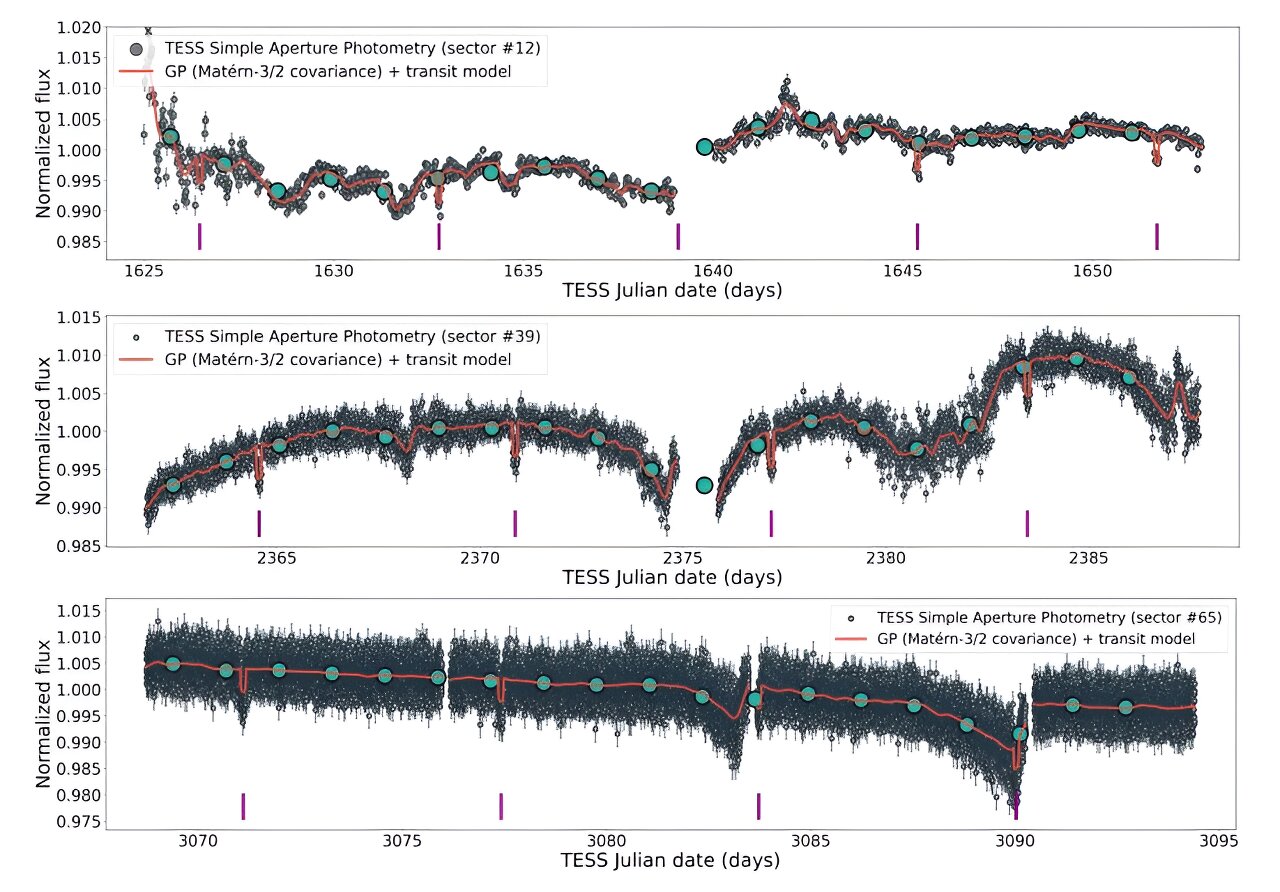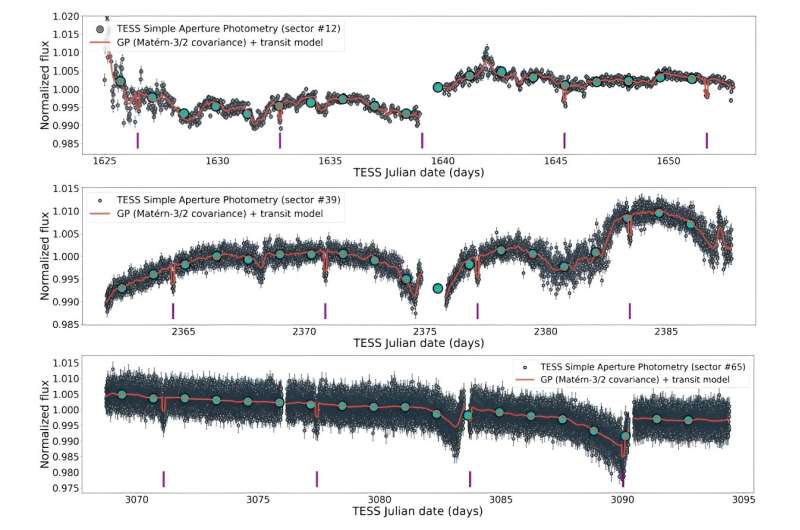

An international team of astronomers reports the discovery of a new super-Neptune exoplanet orbiting a solar-type star. The newly detected alien world, which received the designation TOI-5005 b, is about six times larger and more than 30 times more massive than Earth. The finding was detailed in a paper published September 26 on the pre-print server arXiv.
NASA’s Transiting Exoplanets Survey Satellite (TESS) is conducting a survey of about 200,000 of the brightest stars near the sun with the aim of searching for transiting exoplanets. So far, it has identified over 7,200 candidate exoplanets (TESS Objects of Interest, or TOI), of which 557 have been confirmed so far.
Recently, a group of astronomers led by Amadeo Castro-González of the Astrobiology Center in Madrid, Spain, confirmed another TOI monitored by TESS. They found a transit signal on the light curve of TOI-5005—a moderately bright solar-type star of spectral type G2V, located some 685 light years away. The planetary nature of this signal was confirmed by follow-up observations using ground-based facilities.
“In this work, we used TESS, HARPS, PEST, and TRAPPIST-South data to confirm the planetary nature of TOI-5005 b and characterize its orbital and physical properties,” the researchers wrote in the paper.
The newfound planet has a radius of 6.25 Earth radii and a mass of 32.7 Earth masses, which yields a density at a level of 0.74 g/cm3. It orbits its host every 6.31 days, at a distance of approximately 0.066 AU from it. The planet’s equilibrium temperature was derived to be 1,040 K.
Investigating the internal structure of TOI-5005 b, the astronomers estimated that its core mass fraction and envelope metal mass fraction are about 0.74 and 0.08, respectively. All in all, the overall metal mass fraction of this exoplanet was calculated to be 0.76, therefore slightly lower than that of Uranus and Neptune. These results suggest that TOI-5005 b was formed via core accretion.
Based on the obtained data, the authors of the paper classified TOI-5005 b as a super-Neptune near the ridge of the “Neptunian savanna.” The so-called Neptunian desert and savanna mark the dearth of Neptune-like exoplanets on the shortest-period orbits and their modest occurrence at larger orbital distances. They are separated by a recently identified overdensity (ridge) of Neptunes in the 3–5 day orbital period range.
The researchers noted that TOI-5005 b has become a new member of a generally rare population of low-density Neptunes in the Neptunian savanna, in contrast to the planets in the ridge, which typically show higher densities—above 1.0 g/cm3.
In concluding remarks, the scientists added that the brightness of TOI-5005 makes the newly detected planetary system a key target for atmospheric and orbital architecture observations.
More information:
A. Castro-González et al, TOI-5005 b: A super-Neptune in the savanna near the ridge, arXiv (2024). DOI: 10.48550/arxiv.2409.18129
Journal information:
arXiv
© 2024 Science X Network
Citation:
New super-Neptune exoplanet discovered (2024, October 2)
retrieved 2 October 2024
from https://phys.org/news/2024-10-super-neptune-exoplanet.html
This document is subject to copyright. Apart from any fair dealing for the purpose of private study or research, no
part may be reproduced without the written permission. The content is provided for information purposes only.